1. St. Elsewhere – The Dream Within a Dream
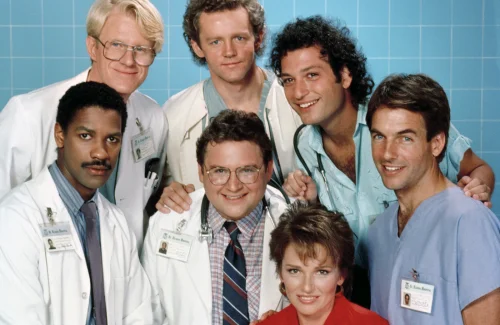
The finale of St. Elsewhere (1982–1988) shocked viewers by revealing that the entire series had been imagined by Tommy Westphall, an autistic boy staring into a snow globe. This twist turned the hospital drama into nothing more than a figment of his imagination, leaving fans in disbelief. The entire show, with its complex characters and life-or-death scenarios, was ultimately nothing more than a dream within a dream, altering the very essence of the show itself. The revelation left many viewers questioning not just the storyline but the very concept of reality in television, creating a lasting discussion about narrative structure.
This ending became one of the boldest and most audacious in television history. The finale, with its mind-bending twist, raised debates about what can be considered “real” in fictional storytelling, especially on a medium where viewers tend to believe in the continuity of the narrative. The twist was widely considered one of the most unexpected and complex conclusions, shifting the show from a typical hospital drama into a deep philosophical discussion on perception and the nature of television.
2. Newhart – A Dream Within a Dream
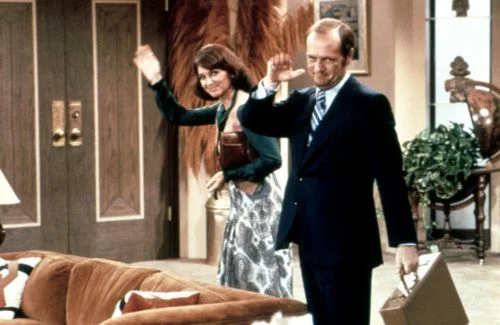
In the series finale of Newhart (1982–1990), viewers were stunned when Bob Newhart’s character, who had spent the entire series running a bed-and-breakfast, woke up in bed with his wife from his previous show, The Bob Newhart Show. The entire premise of Newhart was revealed to be a dream, breaking the fourth wall and creating a surreal moment where the character was shown to have imagined everything from his time in Vermont to the quirky staff and guests. This meta twist left fans both amused and confused, as it seemed like a playful and intentionally absurd way to wrap up the series.
By linking the two shows, the finale blurred the lines between the two characters Bob played, demonstrating a meta-narrative that had never been done before on TV. The ending allowed the show to break free from the expectations of sitcom endings, using humor and surprise to throw the entire audience for a loop. It remains one of the most inventive and memorable twists in television history, as it reflected the nature of television itself, where storylines can be as fantastical as the mind imagining them.
3. Moonlighting – The Lunar Eclipse
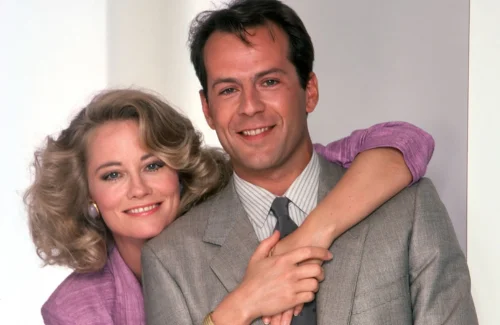
The Moonlighting (1985–1989) season finale, “Lunar Eclipse,” ended with an unexpected and dramatic cliffhanger. The episode concluded with the shocking twist of a love triangle involving the main characters, adding a layer of suspense and surprise that was typical of the show’s unpredictable nature. The plot twist wasn’t just about romantic tension—it also hinted at a darker side of the characters, blending comedy, drama, and mystery in a way that kept viewers hooked. The final moments left audiences questioning the fate of the relationship and the future of the detective agency.
This finale encapsulated the unique blend of genres that made Moonlighting such a hit. The show was known for mixing comedy with serious moments, and this twist exemplified its unpredictable storytelling style. Viewers were left eagerly awaiting the next season, desperate to know how the cliffhanger would resolve, and it cemented Moonlighting‘s reputation for keeping its audience on edge with each episode.
4. Dallas – Who Shot J.R.?
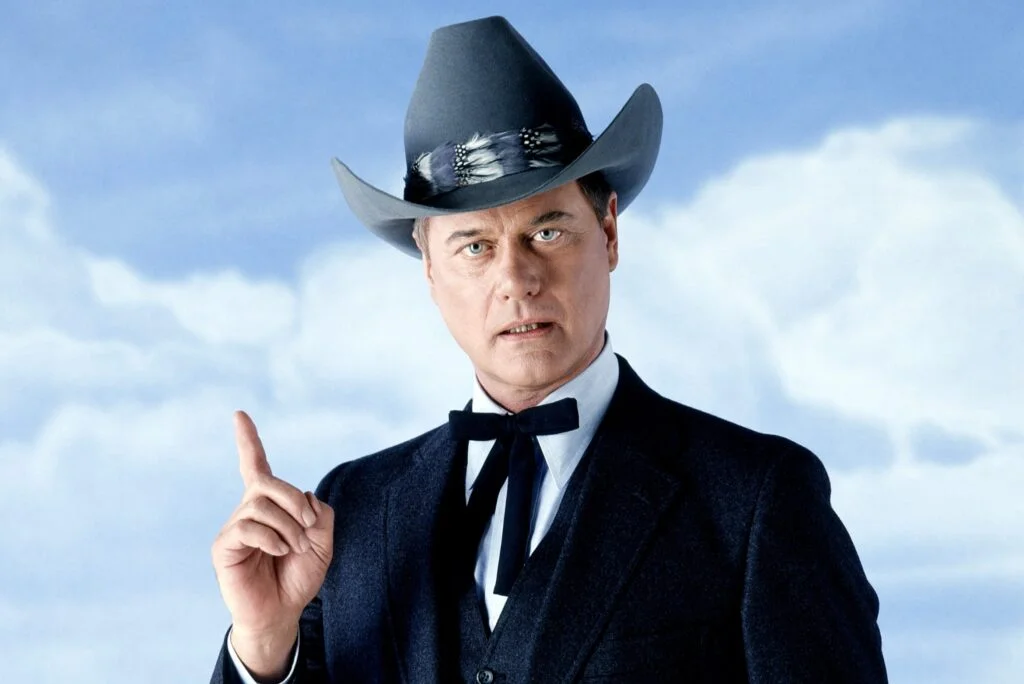
The “Who Shot J.R.?” storyline in Dallas (1978–1991) became a cultural phenomenon and one of the most iconic plot twists in TV history. The mystery surrounding who shot the ruthless J.R. Ewing captivated viewers, sparking a national obsession. The entire summer of 1980 was filled with speculation, as fans debated the identity of the shooter. The twist not only gripped the nation, but it also set television history in motion by demonstrating the power of cliffhangers in building massive anticipation.
The reveal of the shooter was an explosive moment that dramatically altered the course of the show. It proved the power of suspenseful writing and how a plot twist could define an entire cultural moment. The episode marked a turning point for the soap opera genre, as it demonstrated that shocking twists could bring a level of excitement and intrigue never seen before in mainstream TV dramas.
5. Knots Landing – The Reunion
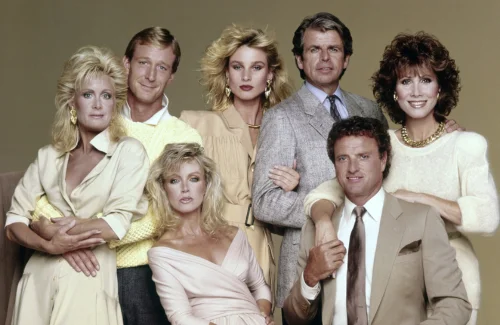
In Knots Landing‘s (1979–1992) “Reunion” episode, the plot twist comes to a head during a glamorous fashion show, which at first seems like a superficial event. As the event unfolds, however, it acts as the catalyst for resolving long-standing personal tensions and emotional conflicts among the characters. The plot twist creates a powerful moment of reflection and growth, as the characters navigate the intersection of their personal and professional lives. The fashion show turns from a simple spectacle into a moment of reckoning, forcing characters to confront their past decisions.
This twist served as an essential turning point in the series, making it clear that Knots Landing was more than just a soap opera about relationships—it also explored deeper themes of forgiveness, family dynamics, and the consequences of past actions. The twist added layers of depth and complexity to the show, making it both entertaining and thought-provoking. It showcased how seemingly trivial events in a character-driven series could lead to major revelations.
6. V – The Visitor’s True Nature
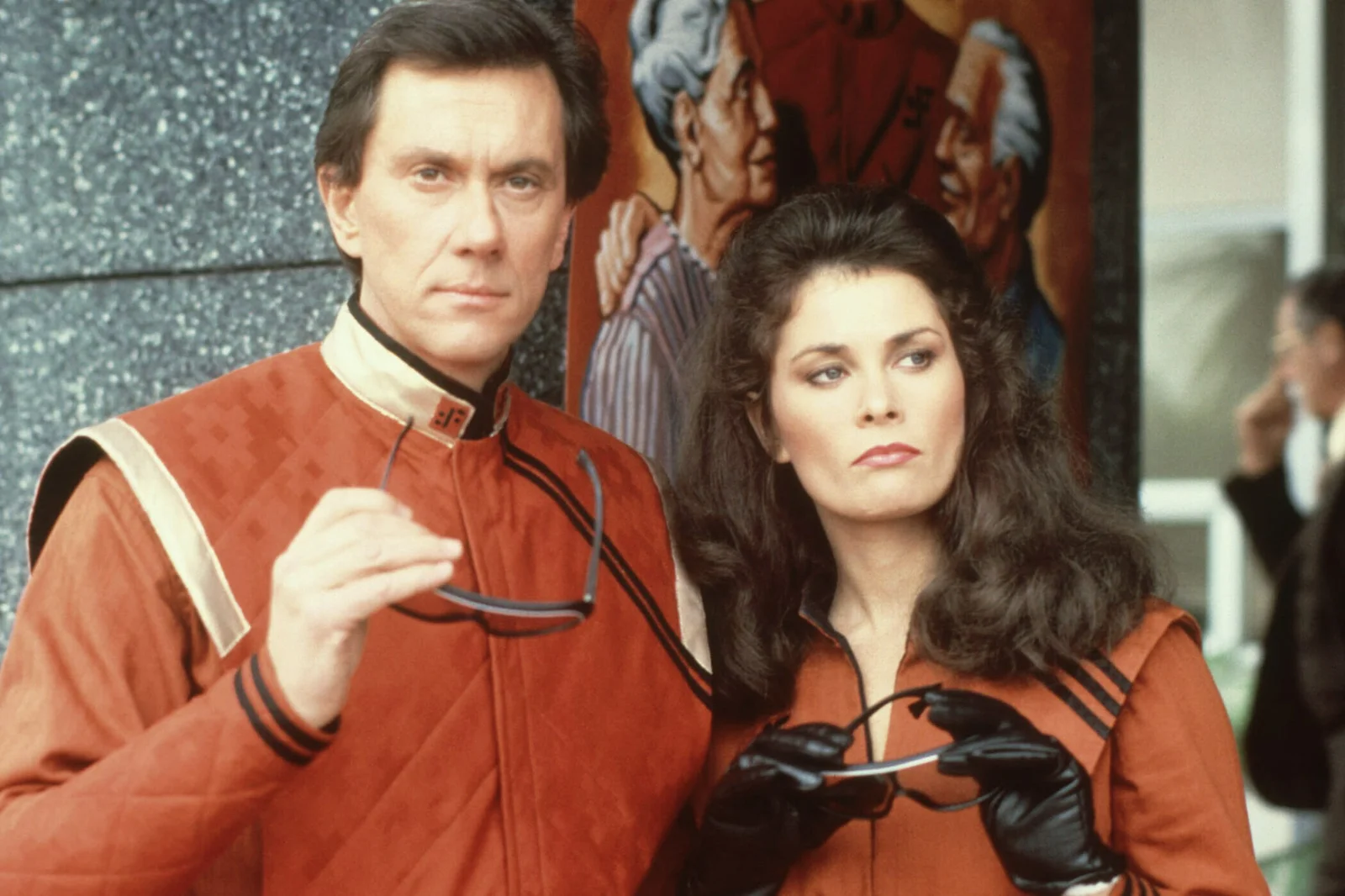
V (1984) had one of the most startling plot twists when the alien visitors, who appeared to be benevolent beings, were revealed to be reptilian creatures in disguise. This twist shifted the entire tone of the series, transforming the visitors from friendly allies to formidable enemies. The revelation not only shocked viewers but also questioned the true nature of the visitors’ intentions, setting the stage for the ongoing struggle between humans and aliens. It added a deeper layer of conflict, as the audience saw the stakes of the battle grow much higher than initially anticipated.
This twist transformed the show’s narrative, combining science fiction with social commentary about deception, power, and trust. The startling visual of the reptilian aliens, combined with their sinister motives, made for an unforgettable moment in TV history. The plot twist revealed how well-executed reveals can drastically change the dynamics of a show, forcing both characters and audiences to confront the implications of this deception.
7. Hunter – Unfinished Business

In Hunter (1984–1991), the episode “Unfinished Business” took a surprising turn when Detective Hunter discovered that a 17-year-old suspect was actually his son. This revelation not only added a personal twist to the case but also complicated Hunter’s professional and personal life in ways he never expected. The discovery brought an emotional depth to the series, which had previously been more focused on action and crime-solving. This family secret forced Hunter to reconcile his role as a father with his demanding career, adding a layer of complexity to his character.
The twist was a significant development for the series, giving viewers a more intimate look into Hunter’s life and showing how personal stakes can influence a professional’s decisions. It humanized the hard-edged detective and added layers to his motivations. The plot twist turned the episode from a standard crime drama into a compelling exploration of family, responsibility, and identity.
8. Max Headroom – The Birth of an AI
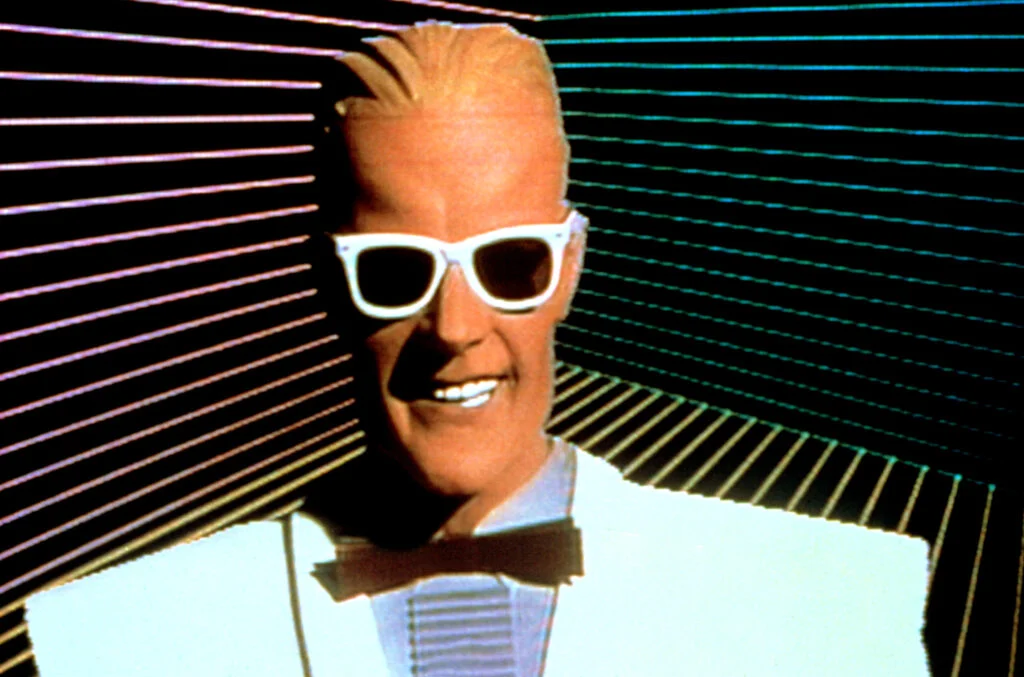
Max Headroom (1987–1988) offered a groundbreaking twist when investigative journalist Edison Carter’s mind was digitized, creating the AI personality Max Headroom. This event raised questions about identity, consciousness, and the nature of reality, making the twist more than just a plot device. It introduced viewers to a world where technology and humanity collided in an unsettling way, and Max Headroom’s emergence as an artificial personality blurred the lines between human and machine. This twist set the stage for exploring the darker side of technology and media.
The series used this development to explore themes like corporate manipulation, privacy issues, and the impact of technology on society. The twist was revolutionary for its time, offering a cyberpunk narrative that felt ahead of its time. It questioned the future of artificial intelligence and the ethical boundaries of digital identity, all while providing a thrilling and thought-provoking story.
9. Cheers – The Return of Diane
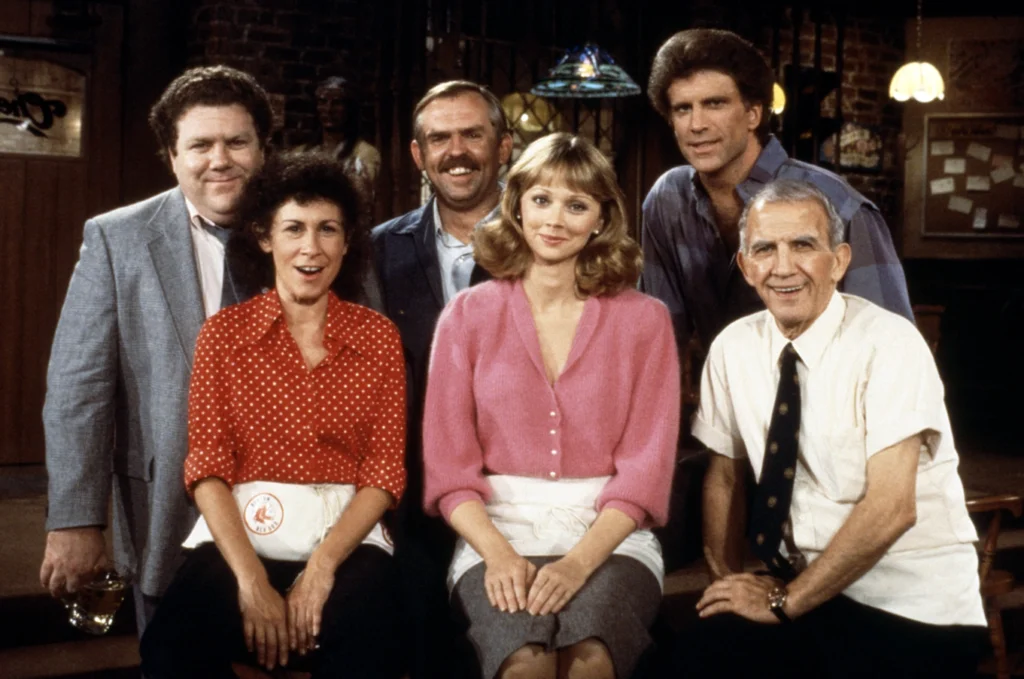
In Cheers (1982–1993), Diane Chambers’ return after leaving in season 3 was a major plot twist that reignited old tensions between her and Sam Malone. The reappearance of Diane brought back unresolved feelings and complicated the relationships at the iconic bar, particularly Sam’s complicated emotional journey. Her return caused conflict among the main characters, especially when Sam found himself torn between his past love and his future with Rebecca. Diane’s return highlighted how unresolved romantic histories can resurface unexpectedly, adding drama and tension to a previously lighthearted setting.
This twist injected new life into the show, bringing past storylines to the forefront and showing how past relationships can influence present choices. It also demonstrated how long-running TV shows can maintain viewer interest by revisiting old, unresolved plotlines. The return of Diane added emotional complexity to a show that was known for its humor, making it more than just a sitcom but a series that dealt with the intricacies of love, friendship, and personal growth.
10. The Wonder Years – The Narrator’s Identity

The Wonder Years (1988–1993) introduced a subtle yet impactful twist when it was revealed that the adult narrator, who had been reflecting on his childhood throughout the series, was actually the grown-up version of Kevin Arnold. This revelation provided a reflective layer to the series, as it added a deeper emotional context to Kevin’s journey. The audience had been hearing his thoughts as an adult, offering a unique perspective on the events of his teenage years, making each story feel more poignant as it was being shared with hindsight.
The twist effectively elevated the coming-of-age storytelling by offering not just a nostalgic look back at the past but a mature reflection on the significance of those formative years. This narrative choice helped to connect the themes of growing up and understanding oneself with the broader human experience. The twist allowed The Wonder Years to resonate with audiences of all ages, as they could see themselves in Kevin’s journey of discovery and emotional growth.
11. Remington Steele – The Real Remington Steele
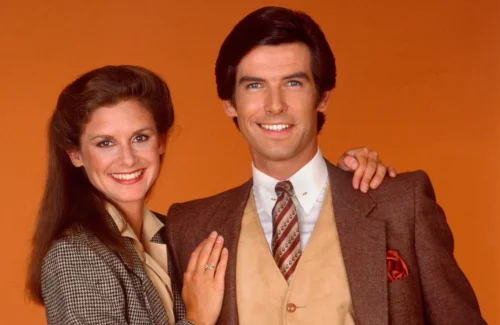
Remington Steele (1982–1987) played with expectations by revealing that the man posing as the suave private detective Remington Steele wasn’t who he claimed to be. Steele’s true identity was an imposter, and this plot twist added an extra layer of intrigue to the character. Throughout the series, viewers had been led to believe that Steele was a legitimate detective, but the twist exposed the truth—he was an unlicensed con artist posing as someone he wasn’t. This revelation added mystery and complexity to the storyline, as the audience was forced to reconsider everything they thought they knew about the main character.
The twist in Remington Steele kept the audience on edge, as it blurred the lines between identity and deception. It also gave the character more depth, as his actions were now seen in a new light. By introducing this twist, the show elevated itself from a typical detective series to one that challenged the conventions of the genre, showing how deception and hidden identities can play a central role in a compelling narrative.
12. Family Ties – Alex’s Political Transformation

In Family Ties (1982–1989), one of the most surprising twists involved Alex P. Keaton, the conservative, Reagan-loving teenager, undergoing a shift that turned him into a more sympathetic, complex character. Throughout the series, Alex was portrayed as the poster child for conservative ideals, constantly clashing with his liberal parents. However, in the later seasons, Alex faced personal and emotional challenges that prompted him to question his political and moral beliefs. This transformation added layers to his character, showing that even the most staunch ideologues could experience growth and change.
This twist not only enriched Alex’s character but also highlighted how Family Ties tackled real-life political and social issues with humor and sensitivity. It was a rare moment in television where a character, particularly one as strongly defined by their ideology, evolved in such a dramatic way. By exploring the complexities of political and personal identity, Family Ties demonstrated how a seemingly straightforward sitcom could delve into deeper, more thought-provoking territory, keeping its audience engaged while challenging their own perspectives.


